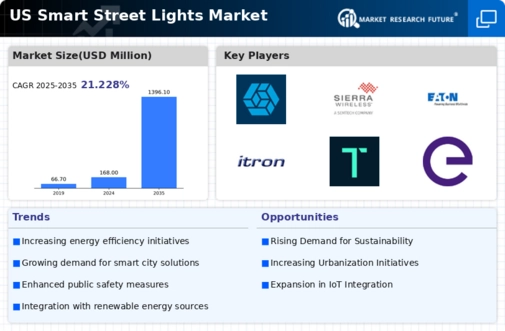The US Smart Street Lights Market is experiencing significant growth driven by the increasing need for intelligent infrastructure that enhances urban living. As municipalities look to modernize their lighting systems, this market is characterized by innovations in technology, integration with IoT capabilities, and a growing emphasis on energy efficiency. Key players in the market are leveraging advanced sensors, wireless connectivity, and data analytics to provide smarter solutions. The competitive landscape is continually evolving, with companies focusing on product development, strategic partnerships, and market differentiation to establish a strong foothold in this rapidly growing sector.
Signify stands out as a prominent player in the US Smart Street Lights Market, recognized for its emphasis on innovative lighting solutions. The company's extensive product portfolio includes technologically advanced street lighting systems that not only improve visibility and safety but also reduce energy consumption significantly. Signify's strengths lie in its strong brand reputation, commitment to sustainability, and investment in research and development. The company has successfully expanded its market presence in the US by forming strategic alliances with local governments and urban planners to implement smart city initiatives.
By focusing on intelligent and connected lighting solutions, Signify has established itself as a leader in promoting energy-efficient street lighting across various urban settings.
Sierra Wireless has carved a niche for itself in the US Smart Street Lights Market by specializing in connectivity solutions essential for smart street lighting infrastructures. The company offers a range of products and services including cellular modules and gateways, which enable seamless communication between smart street lights and control systems. Sierra Wireless's strengths in the market stem from its expertise in IoT connectivity and its ability to provide reliable, scalable solutions that empower municipalities to optimize street lighting management.
The company has also engaged in strategic partnerships and acquisitions to expand its product offerings and enhance its market footprint in the US. By focusing on advancing wireless communication technologies and IoT applications specific to smart street lighting, Sierra Wireless continues to play a crucial role in the evolving landscape of urban infrastructure solutions.




















